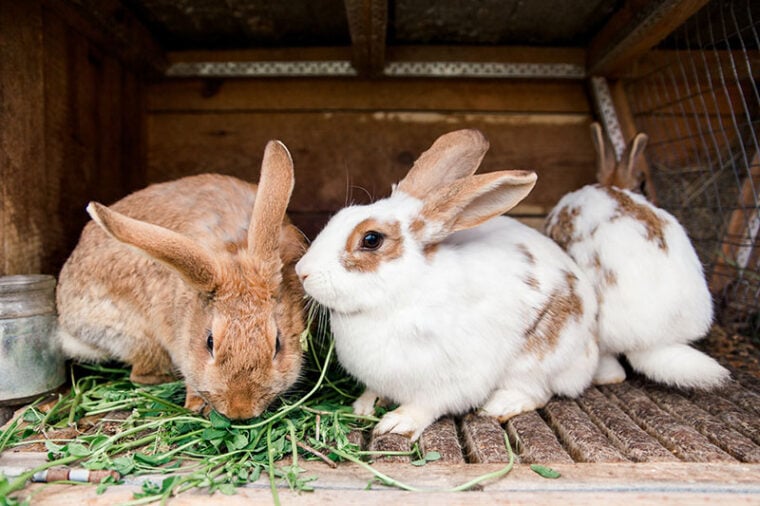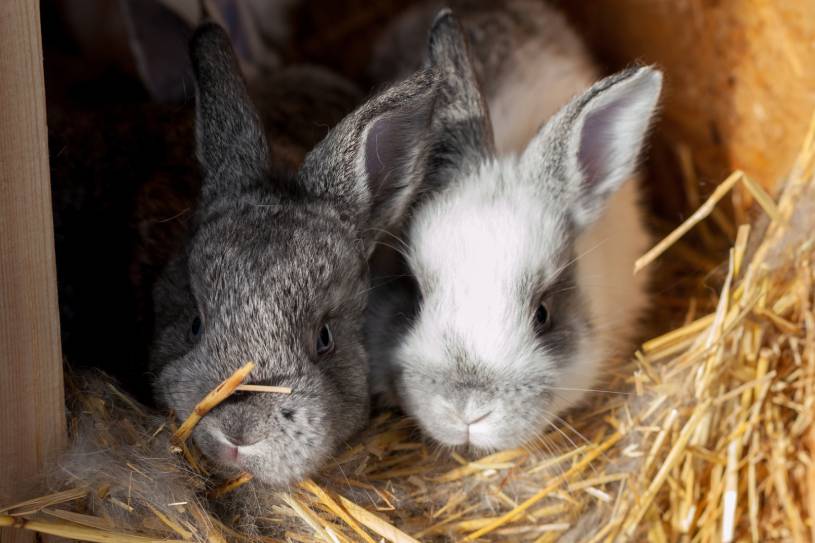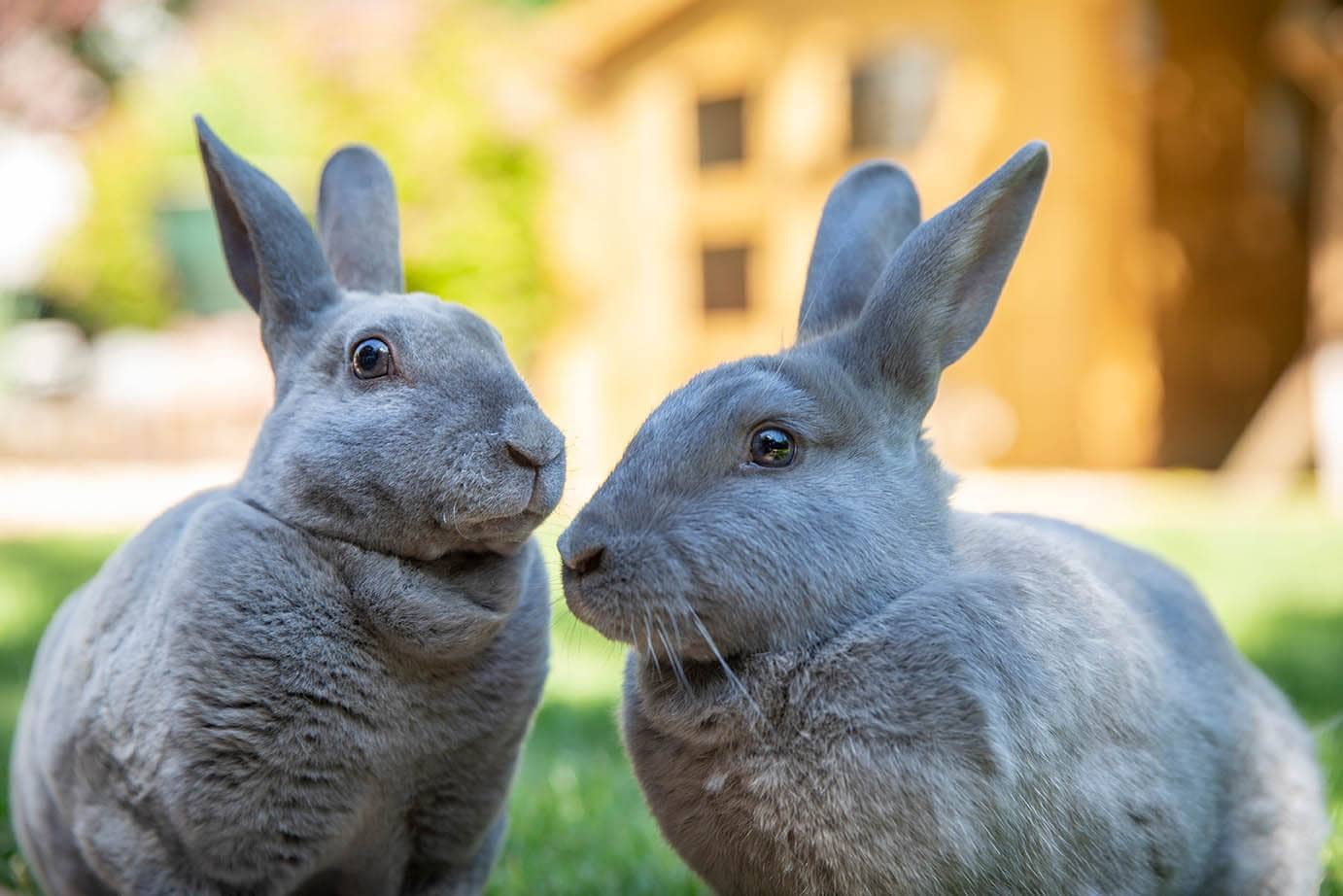
If you plan to raise rabbits, there’s a lot to know about how and when to breed them correctly. One of the most important factors is the age of the rabbit. Rabbits become sexually mature quite early, and female rabbits reach sexual maturity more quickly than males. Rabbits become sexually mature quite early. On average, a rabbit can be bred between 3 and 7 months of age.
A couple of extenuating circumstances could cause the figures above to change. To discover what they are and learn more about breeding rabbits, read on!
At What Age Can Different Rabbit Species Begin to Breed?
We mentioned in the introduction that a couple of extenuating circumstances can change the timing of when a rabbit can breed. The most important of these circumstances is the type and size of rabbit you plan to breed. The smaller the rabbit, the earlier they can breed. Below are three examples:
Polish Rabbit
This small rabbit can begin making babies at 3 to 4 months of age.
New Zealand Rabbit
The New Zealand rabbit is a medium-sized bunny that can start breeding at around 5 to 7 months.
Flemish Giant Rabbit
This huge rabbit from Flanders is one of the biggest in the world. Female Flemish Giants should be bred the first time when they are at least 7 months old.

How Many Times Can Rabbits Mate per Year?
If you’ve ever heard the term “breeding like rabbits,” you might wonder what it is about this animal that allows them to make so many babies so quickly. Rabbits can start breeding at a very early age compared to many mammals. That’s only part of the story since several other factors allow them to breed more often.
The first of those factors is the short gestation period rabbits have, between 25 and 33 days. With gestation this fast, a female rabbit can have several litters a year. The average in the wild is three to five litters per year. Then there’s the fact that females can become pregnant within a few hours of giving birth and can wean their babies while pregnant.
Can Male Rabbits Stay With their Babies?
After giving birth, which for rabbits is called kindling, most breeders remove the male rabbit from the female and her babies, called kits. The reason why, however, isn’t that the male is a danger to its kits, as most are gentle with them and will cause them no harm.
It’s because the male can impregnate the female within hours of her giving birth, which is something reputable rabbit breeders don’t want to happen.
Why Do Rabbits Breed So Quickly and Profusely?
If you’re wondering what it is about rabbits that make them such prolific breeders, the answer is simple; they’re at the lower end of the food chain. In the wild, rabbits are food for many animals, including the fox, wolf, birds of prey such as the hawk, badgers, snakes, and raccoons.
Because they’re hunted by so many large predators, fewer than 25% of rabbits make it to 1 year of age, and many are killed much earlier. In other words, the reason rabbits make so many babies is that most of them don’t survive, and without a lot of new rabbits being born, the species would go extinct.
Can a Brother and Sister Rabbit Breed?
Mating a brother and sister animal, called inbreeding, is typically frowned upon in the breeding community, no matter the animal. The same goes for rabbits, and most rabbit breeding experts don’t breed siblings due to the risk of birth defects and passing on defective genes from one generation to the next.
There is, however, one train of thought that says breeding sibling rabbits can, in some situations, be a good thing. For example, if you own two rabbits with exceptional genes, the possibility they pass those genes safely down to some of their kits is high. The downside, however, is that some of the kits will need to be culled (aka euthanized) due to defects or deformities in their health or character.

What Is Line Breeding in Rabbits?
Line breeding rabbits is when a father rabbit breeds with its daughter or a mother rabbit with its son. This might sound horrific to us, but in the rabbit world, there are some benefits to this breeding process. For example, if your buck and doe have excellent genes with enviable attributes, line breeding can help you “line up” those genes, so to speak, and pass them down from one generation to the next. It must be said, however, that culling some of the resultant kits will likely be necessary.
How Many Times Can You Breed the Same Rabbit Doe?
As with many mammals, male rabbits can breed almost daily without real consequences or detriment to their health. A doe, however, can become unhealthy if allowed to breed too often or too quickly in captivity. Typically, a doe is rebred after 35 to 42 days if its kits are meant to be show or pet rabbits.
When bred for food, however, breeding is usually far more often. To ensure that their breeding doe stock stays healthy, most breeders limit their breeding to six or seven times a year.
What Breeding Problems Do Rabbits Have?
As we’ve seen, rabbits breed prolifically, especially if they’re healthy. However, several issues can cause a decline in rabbit breeding or a total lack of it.
High Temperatures
If the temperature soars above 85℉ for 5 or more days, rabbit bucks can become temporarily sterile. Bucks should always be kept in the coolest part of their enclosure to prevent this.
Old Age
Older does and bucks will breed fewer times than younger ones, which is common among most mammals. The older the rabbit, particularly a doe, the fewer times per year they will procreate.

Obesity
Overweight rabbits of both sexes tend to mate far less than rabbits of a healthy weight. This is especially true for overweight bucks as their sexual desire can drop precipitously.
Poor Nutrition
Rabbits fed nutrient-deficient food will breed far less than those given a healthy, nutritious diet.
Infanticide
Young does may kill and eat their young for many reasons. These include nervousness, neglect, and severe cold. Does that repeatedly kill and eat all their young should not be bred.
Insufficient Teats
Most does have 8 to 10 teats but may have litters of up to 12 or more young. If a doe doesn’t have the ability to feed all her kits sufficiently, they can be placed with another doe with a smaller litter during the first 3 days of life. Does may reject kits that are older, and such kits should be hand reared.
Final Thoughts
Featured Image Credit: Kolomiyets Viktoriya, Shutterstock








